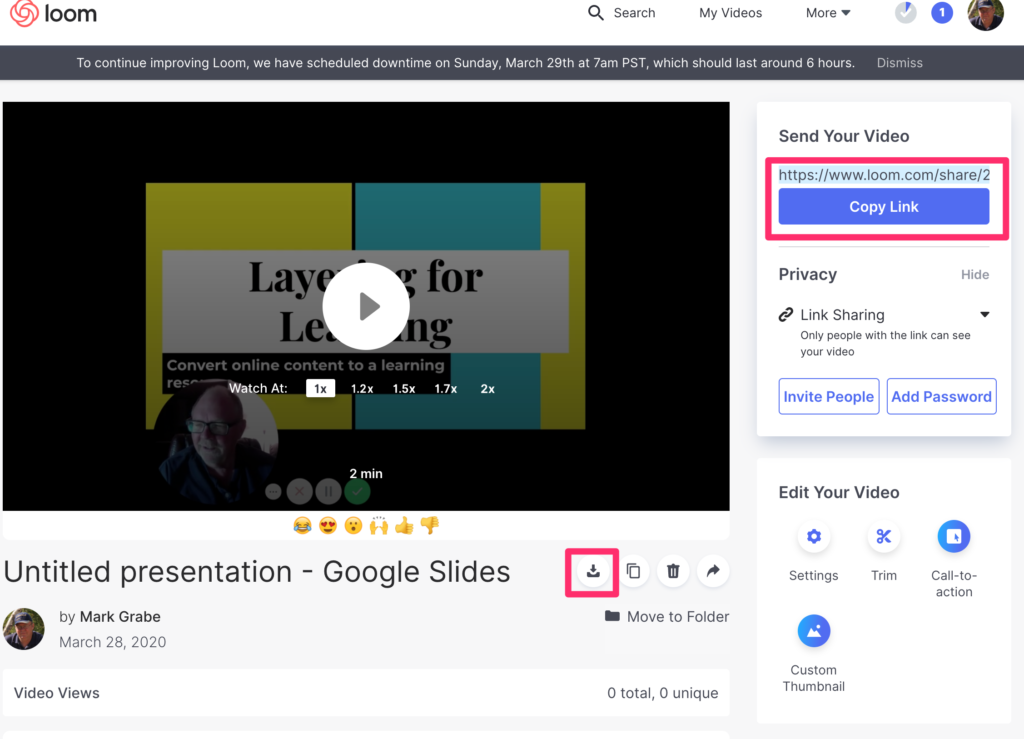This post is a follow up to the previous post asking there should be specific skills taught to preservice or inservice teachers involved in online teaching.
The Covid Emergency forced many face-to-face educators into teaching at a distance (e.g., online teaching). The challenges for these educators and for their students (and parents) were many and the lack of training and time for preparation were among the difficulties the educators faced. The issue I raised in my original post was that if aspects of online education for K12 students continues after COVID should there be different expectations for the training and certification of educators emphasizing remote experiences. I would like to use remote experiences in a more general way than some might assume as online credit recovery and speciality course experiences may be experienced by students within a school facility even when the educator is located elsewhere.
In a way this is a question of the importance of the specificity of preparation. Most students coming out of colleges and universities into the teaching profession have experienced a “technology for teachers” course and perhaps other experiences based on standards that were developed to define expected expertise in the understanding and use of technology in instruction. The ISTE standards are likely the most common example. By specificity, I am asking whether the ISTE standards are necessary given the training of K12 teachers are already guided by standards emphasizing content area knowledge and pedagogical skills. Given the ubiquity of technology in education, why haven’t the existing bodies responsible for teacher skills and knowledge already incorporated the topics ISTE addresses. Moving to the present question of more specific standards, one might ask a similar question. Are the ISTE standards specific enough to cover the skills and knowledge for teaching remotely? I am really asking the questions – who is responsible for making the adjustment to address new circumstances of instruction and what roles do they have in mind for those they prepare?
As someone who is expected to use standards and benchmarks to guide my work, I must admit I often find standards frustratingly vague. I have a version of this same reaction when I review online activities and lessons that are tagged as satisfying specific standards. Often, I can kind of see a relationship, but wonder whether the connection to the standard is specific enough. It often feels like an educational Rorschach test – what do you see in this example and what does this say about your motives and personal understanding of knowledge and skill goals.
Anyway, I have been exploring whether standards specific to teaching at a distance exist and how these standards might compare to what I see as the more general ISTE standards. I pick the ISTE standards because when our book was sold through a commercial publisher I was expected to mark in the margins of pages the standards that applied to the content in our book. Maybe the application of standards works like that old joke describing the response when a baseball umpire is asked about the basis for calling a pitch a ball or a strike and he responds that the pitch is nothing until I call it.
Below, I identify two sources for standards that address the use of technology in education – ISTE and the National Standards for Quality Online Teaching. I think of standards as a hierarchy that moves from general to specific. Personally, I have to move several layers down in this hierarchy before I feel comfortable with my own level of comprehension. I am not going to get into attempting to differentiate standards, benchmarks and assessment methods as those who get deep into this model of guidance do, but I like to at least see attempts to explain concepts and give examples. You should get a sense for this hierarchy in my attempts to use snippets of the hierarchies from the two sources for teacher technology proficiencies I am using. You should find a very general area of competence, an effort to break this area down (as indicated by the identification of “substandards), a short effort to provide a description, and then perhaps a few examples. I have tried to identify an area in which the skill/knowledge covered would at some level seem very similar. For full appreciation of these efforts, you will have to use the links I provide to the online content provided by the responsible organization.
1 Learner – Educators continually improve their practice by learning from and with others and exploring proven and promising practices that leverage technology to improve student learning.
2 Leader – Educators seek out opportunities for leadership to support student empowerment and success and to improve teaching and learning.
3 Citizen – Educators inspire students to positively contribute to and responsibly participate in the digital world.
4 Collaborator – Educators dedicate time to collaborate with both colleagues and students to improve practice, discover and share resources and ideas, and solve problems.
5 Designer – Educators design authentic, learner-driven activities and environments that recognize and accommodate learner variability.
5.1 Use technology to create, adapt, and personalize learning experiences that foster independent learning and accommodate learner differences and needs.
- Personalized learning – Capitalize on technology’s efficiencies and functionality to meet students’ individual learning needs, for example, scaled tests and quizzes; adaptability tools and features; software data that can capture when students are struggling or spending the bulk of their time; competency-based learning resources; ….
6 Facilitator Educators facilitate learning with technology to support student achievement of the ISTE Standards for Students.
7 Analyst Educators understand and use data to drive their instruction and support students in achieving their learning goals.
National Standards for Quality Online Teaching (Quality Matters and the Virtual Learning Leadership Alliance)
Standard A: Professional Responsibilities The online teacher demonstrates professional responsibilities in keeping with the best practices of online instruction.
Standard B: Digital Pedagogy The online teacher supports learning and facilitates presence (teacher, social, and learner) with digital pedagogy.
Standard C: Community Building The online teacher facilitates interactions and collaboration to build a supportive online community that fosters active learning.
Standard D: Learner Engagement The online teacher promotes learner success through interactions with learners and other stakeholders and by facilitating meaningful learner engagement in learning activities.
D.1 – The online teacher uses digital tools to identify patterns in learner engagement and performance that will inform improvements to achieve individual learner growth.
Explanation – The online teacher needs to be able to analyze and interpret a wide range of activity and performance-level data provided in LMSs, adaptive software, and other digital tools. Further, the online teacher needs to be able to identify patterns in the data that can inform interventions geared towards maximizing each learner’s growth.
Examples:
The online teacher uses a mastery dashboard to keep track of whether learners need remediation, are near mastery, or have achieved mastery (as well as what defines an individual’s level of mastery based on growth). Data from the dashboard are used to determine who needs 1-1 sessions with the instructor, learner grouping, etc.
The online teacher uses activity data with the course LMS or dashboard to identify how often a learner logs into the system and what areas/objectives the learner is spending instructional time on. This data helps the teacher in a goal-setting consultation with the learner.
Standard E: Digital Citizenship The online teacher models, guides, and encourages legal, ethical, and safe behavior related to technology use.
Standard F: Diverse Instruction The online teacher personalizes instruction based on the learner’s diverse academic, social, and emotional needs.
Standard G: Assessment and Measurement Assessment and Measurement – The online teacher creates and/or implements assessments in online learning environments in ways that ensure the validity and reliability of the instruments and procedures. The teacher measures learner progress through assessments, projects, and assignments that meet standards-based learning goals, and evaluates learner understanding of how these assessments measure achievement of the learning objectives.
Standard H: Instructional Design These standards are considered optional, as instructional design does not always fall under online teaching responsibilities.
So, are these two sources unique enough and important enough to both be applied in the preparation and certification of educators intending to teach at a distance? Because I study and write about these topics I do see some uniqueness. I find the standards for online educators more focused on individualization (some might say personalization). When I hit the example mentioning mastery dashboards, I immediately think of the Kahn Academy dashboard and the potential for an individualized mastery approach the Kahn dashboard, mastery structure, and assessment system makes available. It is not that mastery, individual progress, and assessment systems could not be used in face-to-face classrooms, it is that this model is rare and I think present goals for online instruction (e.g., credit recovery) make consideration of such approaches more likely. Our present book does discuss the potential of individualization, but I would probably expect those preparing to work entirely online would be more likely to encounter such tactics if intended to work for an organization with an online mission. The decision is how many of these areas could I identify and what number would encourage consideration of a separate course and practical experiences (e.g., student teaching).
![]()









You must be logged in to post a comment.